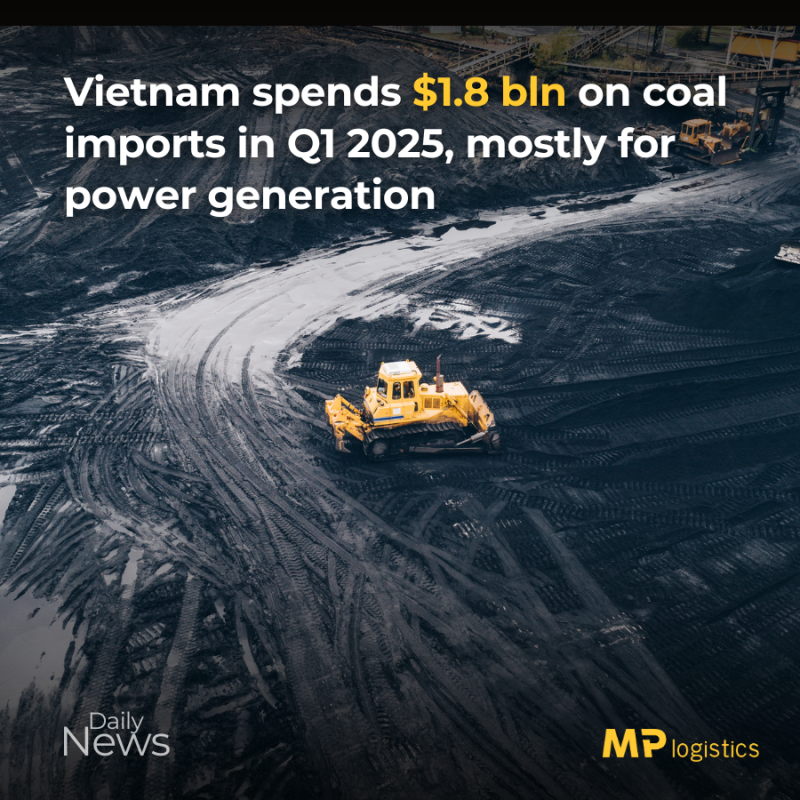
Vietnam spent more than $1.8 billion importing 17.27 million tons of coal in Q1, primarily to fuel thermal power plants, according to the General Department of Customs.
Coal import volume rose 16.7% year-on-year. However, value dropped by 7.7% due to a decline in the average import price to $105.18 per ton, down over 20%.
The higher volume indicates that domestic demand for coal remains strong, particularly as thermal power continues to make up a significant share of the country’s energy mix.
Indonesia remained Vietnam’s largest coal supplier, providing over 40% of total imports in Q1. Shipments from Indonesia reached 6.98 million tons, valued at $579 million – an increase in both volume and value.
The average import price from Indonesia was approximately $82.90 per ton, lower than the overall average.
Australia ranked second, exporting more than 5.36 million tons of coal to Vietnam, worth $693.7 million, accounting for 31% of total imports. Although the volume increased sharply, the total value declined due to a lower average price of $129.3 per ton.
Russia was Vietnam’s third-largest supplier, exporting 1.44 million tons valued at over $206 million. While the volume remained relatively stable, the average price dropped nearly 28% to $142.3 per ton.
Despite being a long-time coal producer, Vietnam continues to rely on imports because domestic coal does not meet the quality requirements for modern thermal power plants.
Locally mined coal is generally used for cement production or smaller-scale industries due to its lower energy content and inconsistent quality.
Moreover, many domestic mines are facing resource depletion, forcing operators to dig deeper and drive up extraction costs.
Imported coal, especially from Indonesia and Australia, offers higher calorific value, better uniformity, and fewer impurities, all of which are critical for efficient power generation. These imports also allow companies to be more flexible with their supply chains while reducing production costs.
Indonesia remains a key coal supplier due in part to favorable trade terms. Under the ASEAN Trade in Goods Agreement (ATIGA), Vietnam applies a 0% preferential import tariff on coal from Indonesia.
To qualify for this rate, importers must present a valid certificate of origin (Form D). Without it, coal imports are subject to the Most-favored Nation (MFN) tariff, which typically ranges from 3% to 5%, depending on the coal type and commodity code.
Vietnam is expected to produce about 37 million tons of clean coal in 2025, while demand may reach as high as 50 million tons, most of it for thermal power generation. As a result, coal imports, especially thermal coal from Indonesia and Australia, are set to continue rising.
Despite ongoing efforts to shift toward renewable energy, coal is projected to remain a cornerstone of Vietnam’s national energy strategy through at least 2030.
Source: The Investor
May 5 2024
 info@mplogistics.vn
info@mplogistics.vn (+84) 28 3811 9033
(+84) 28 3811 9033




 VN
VN